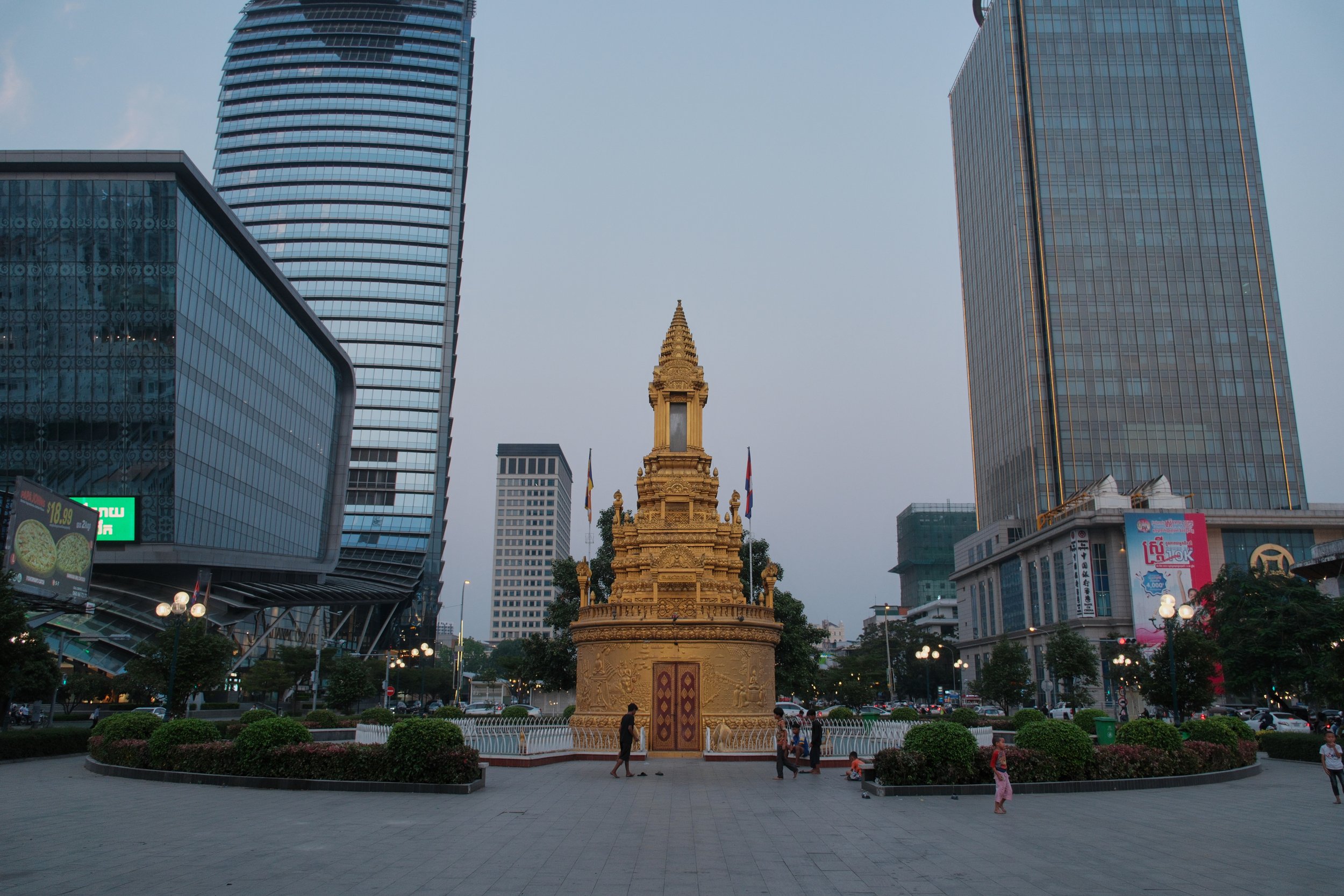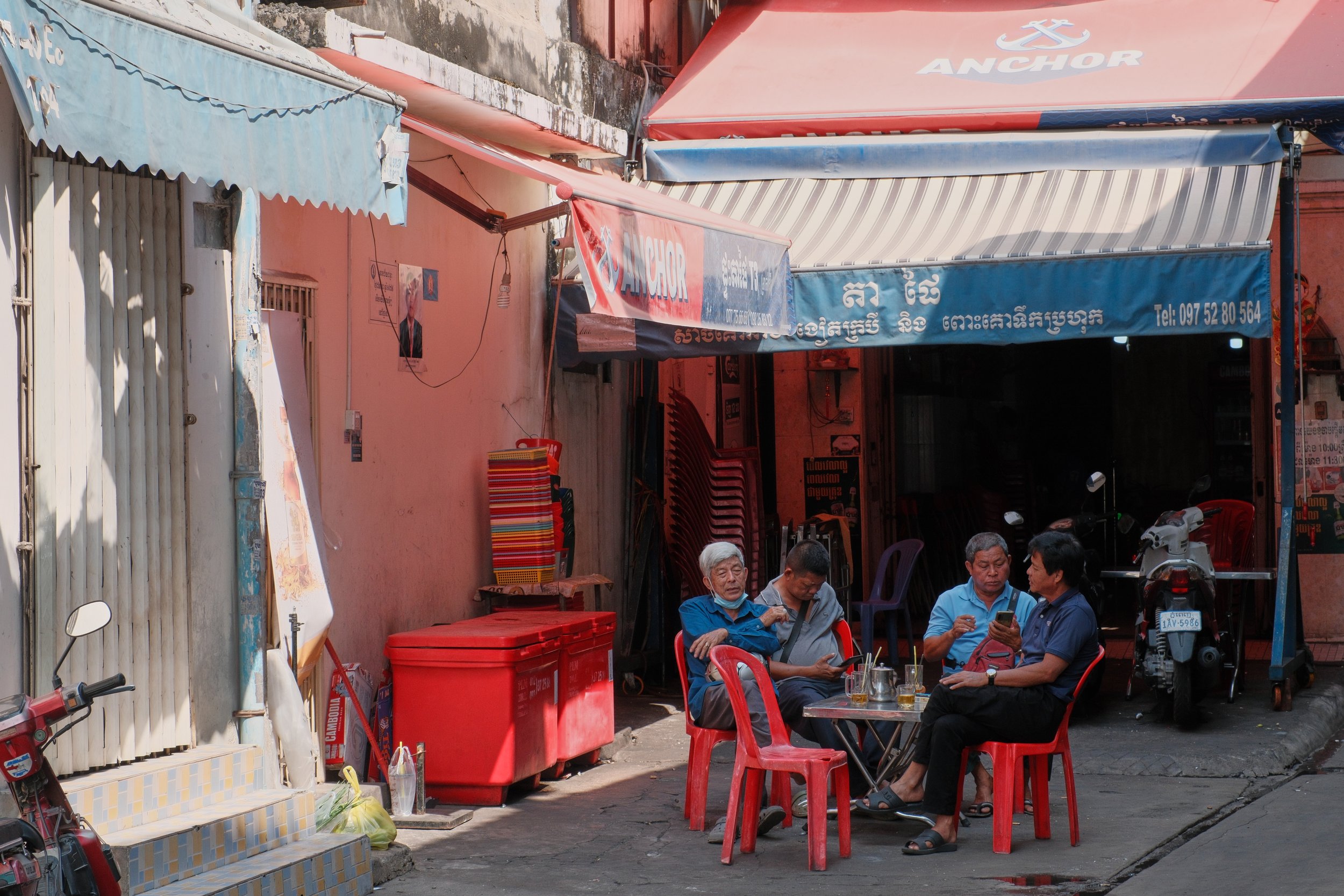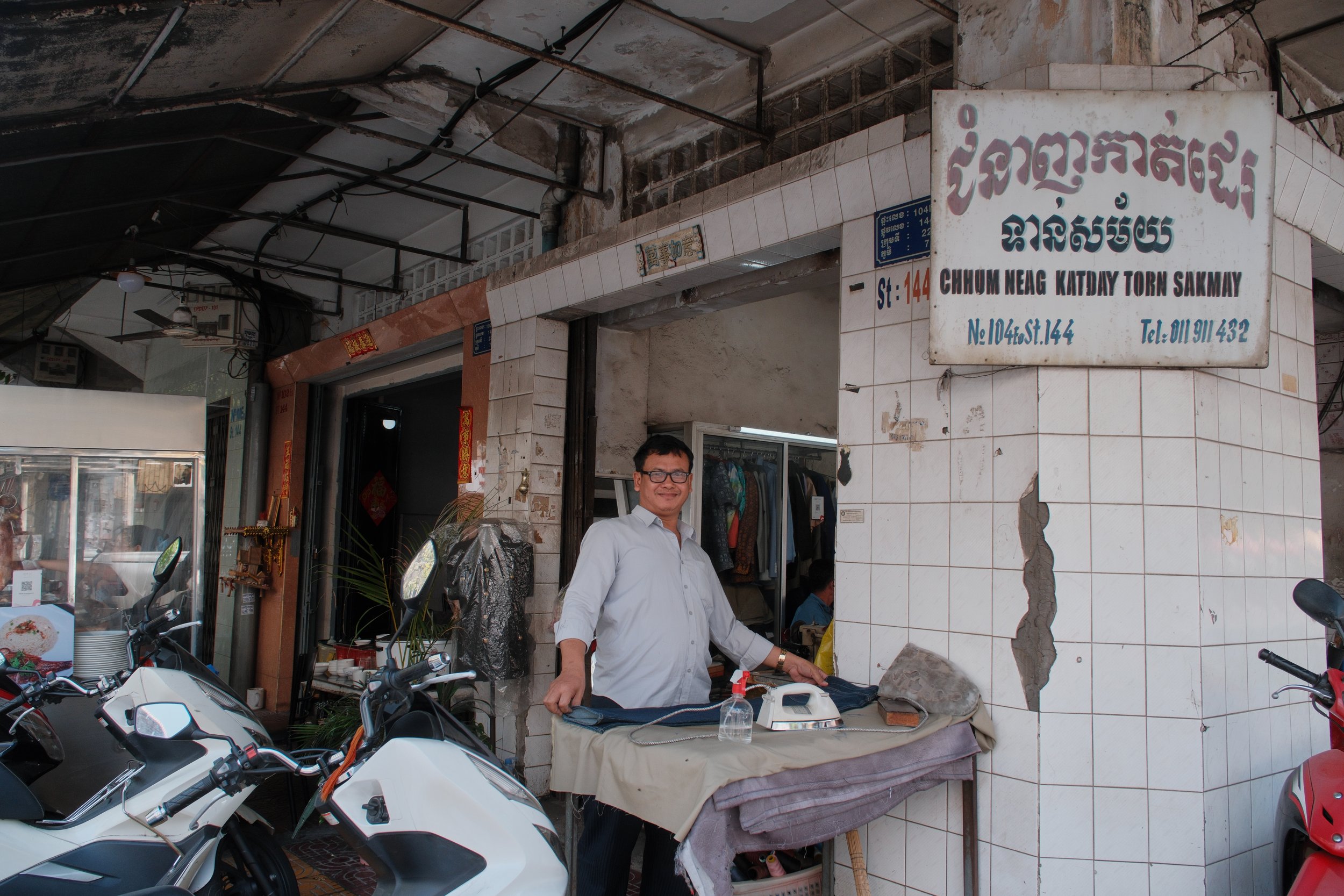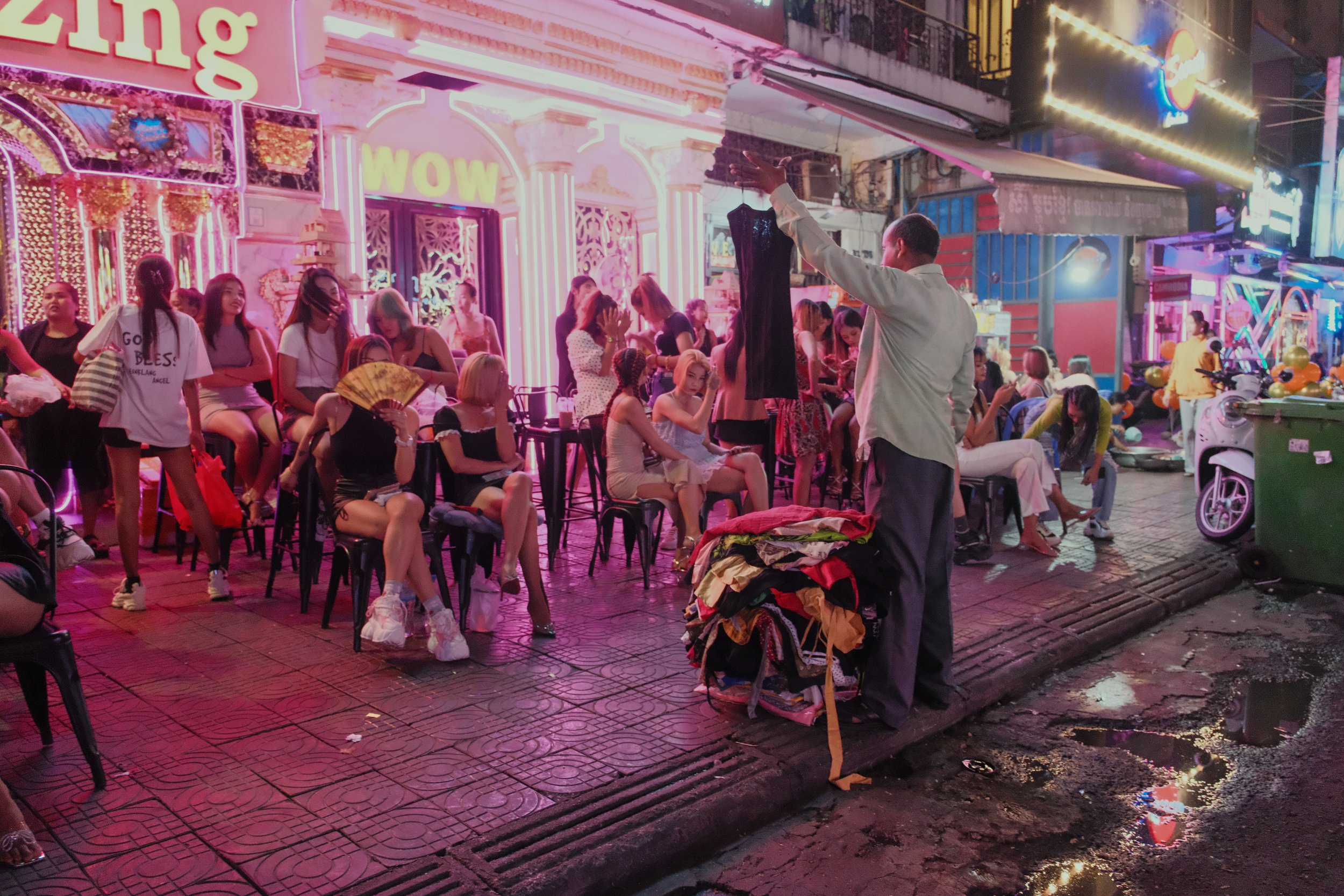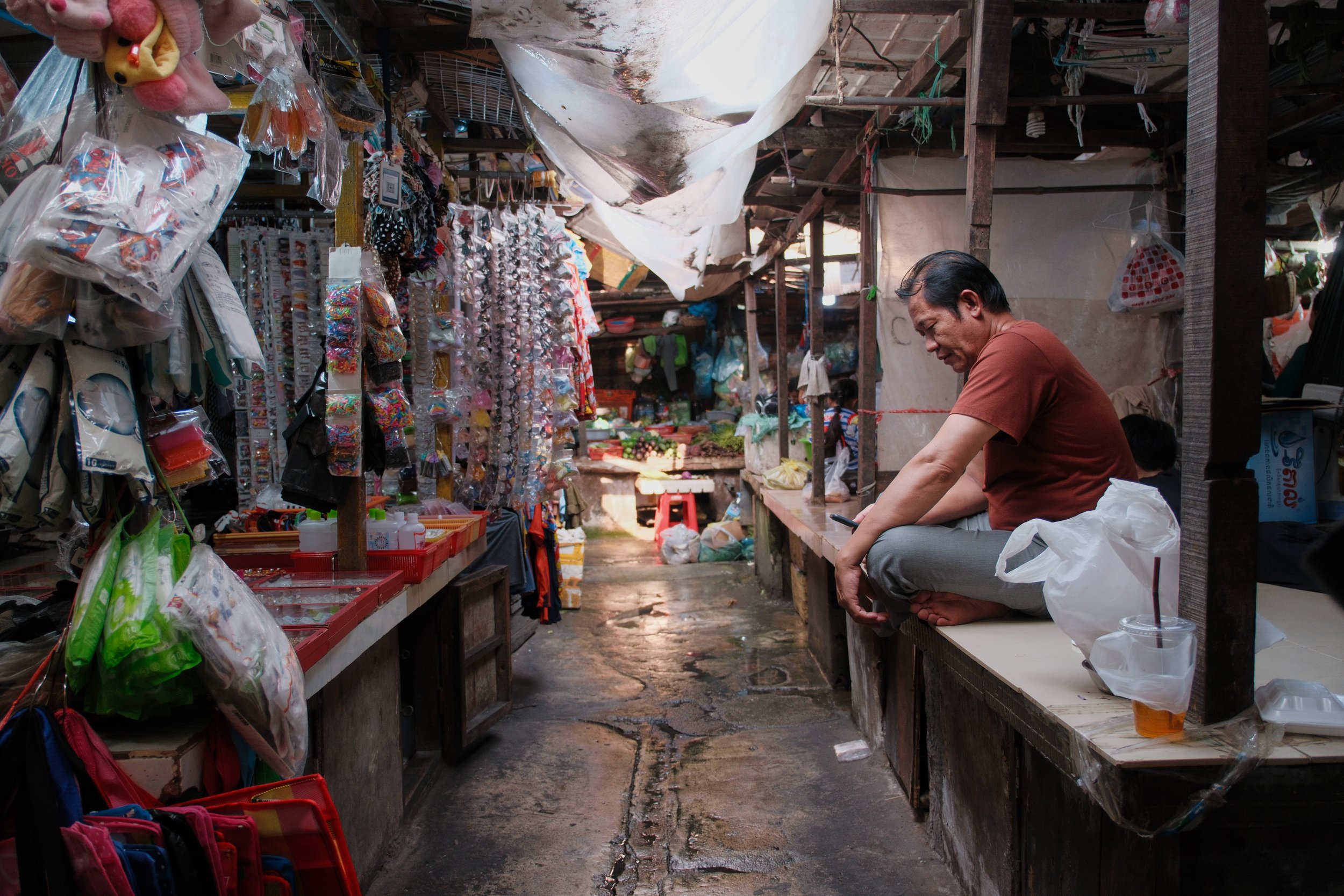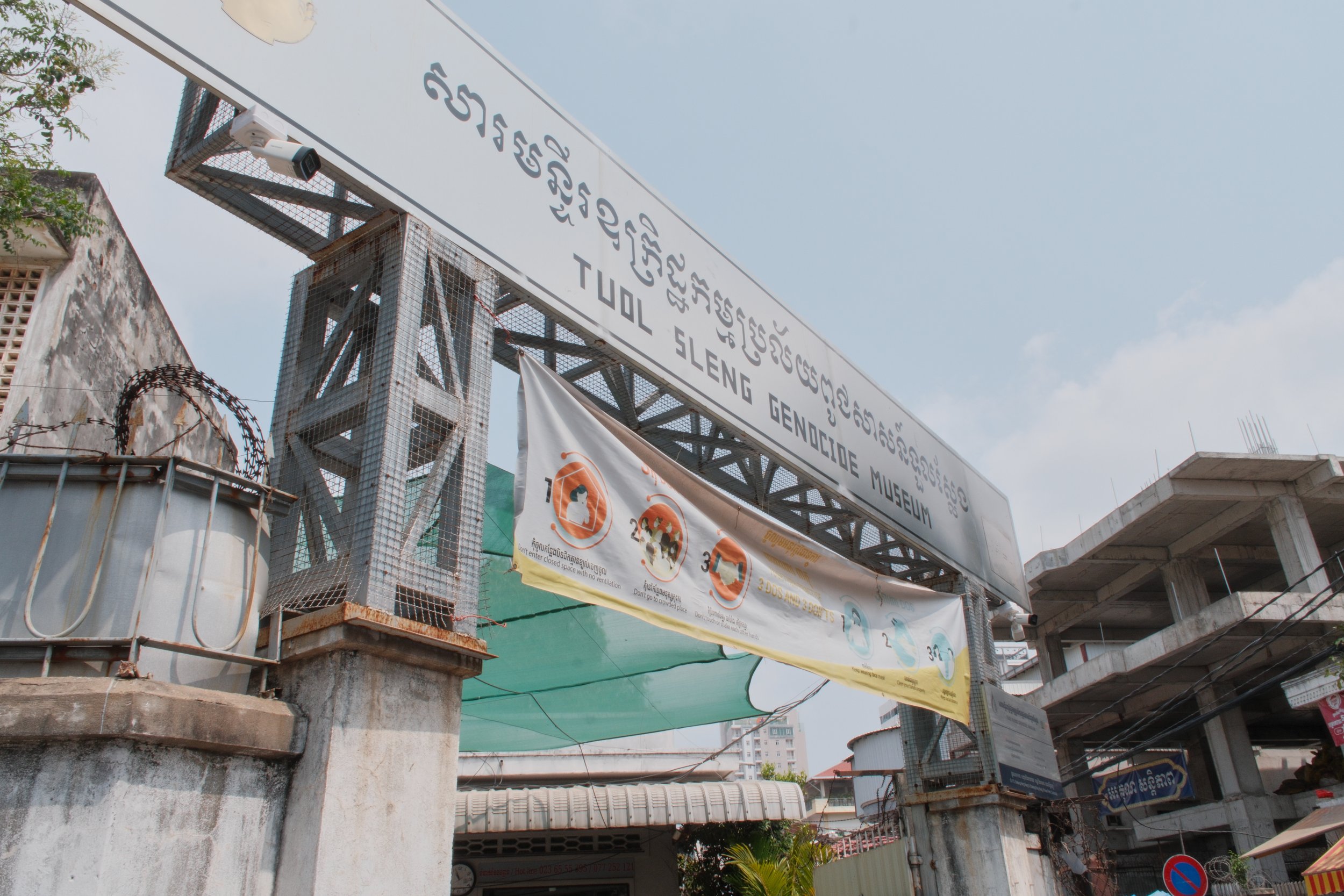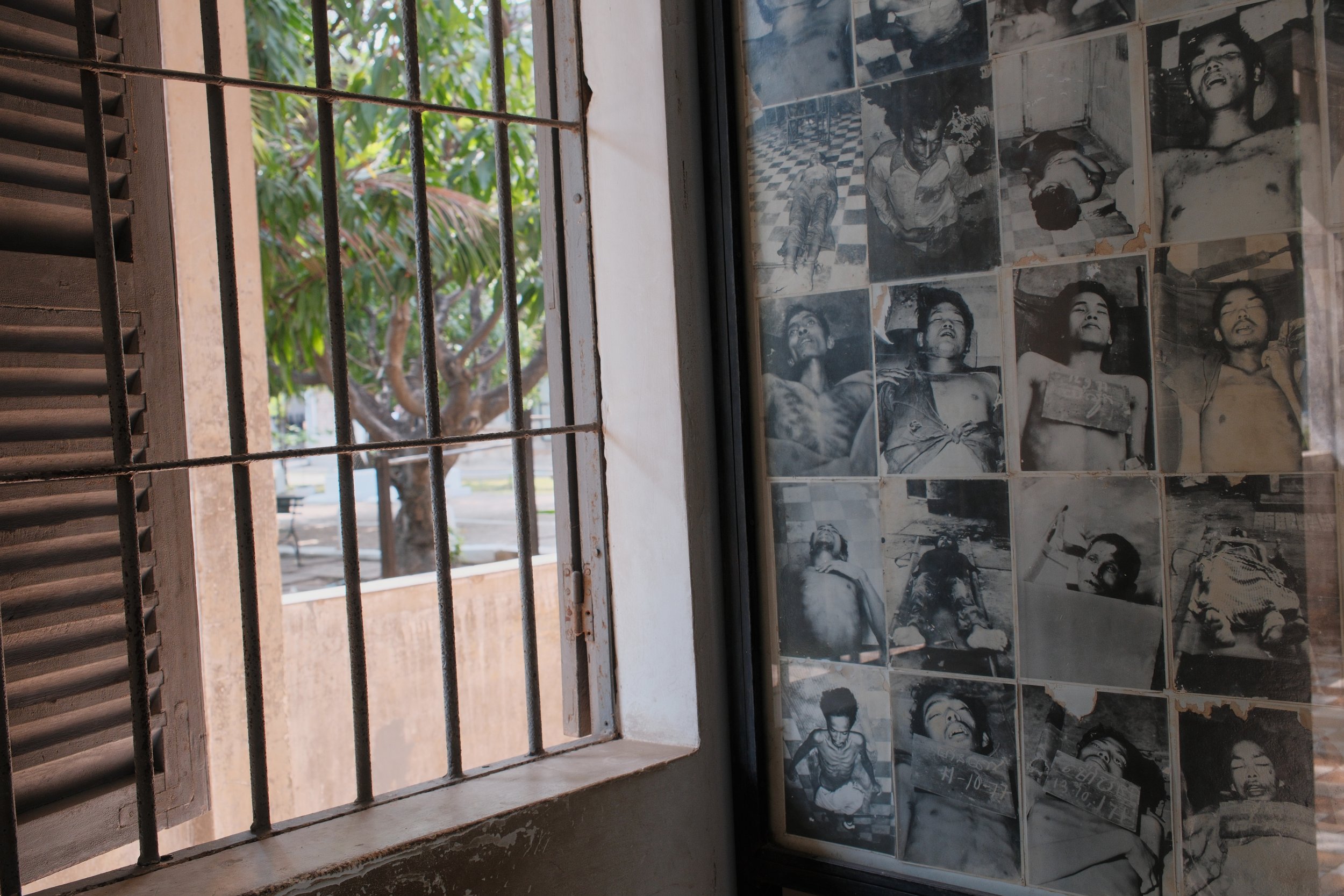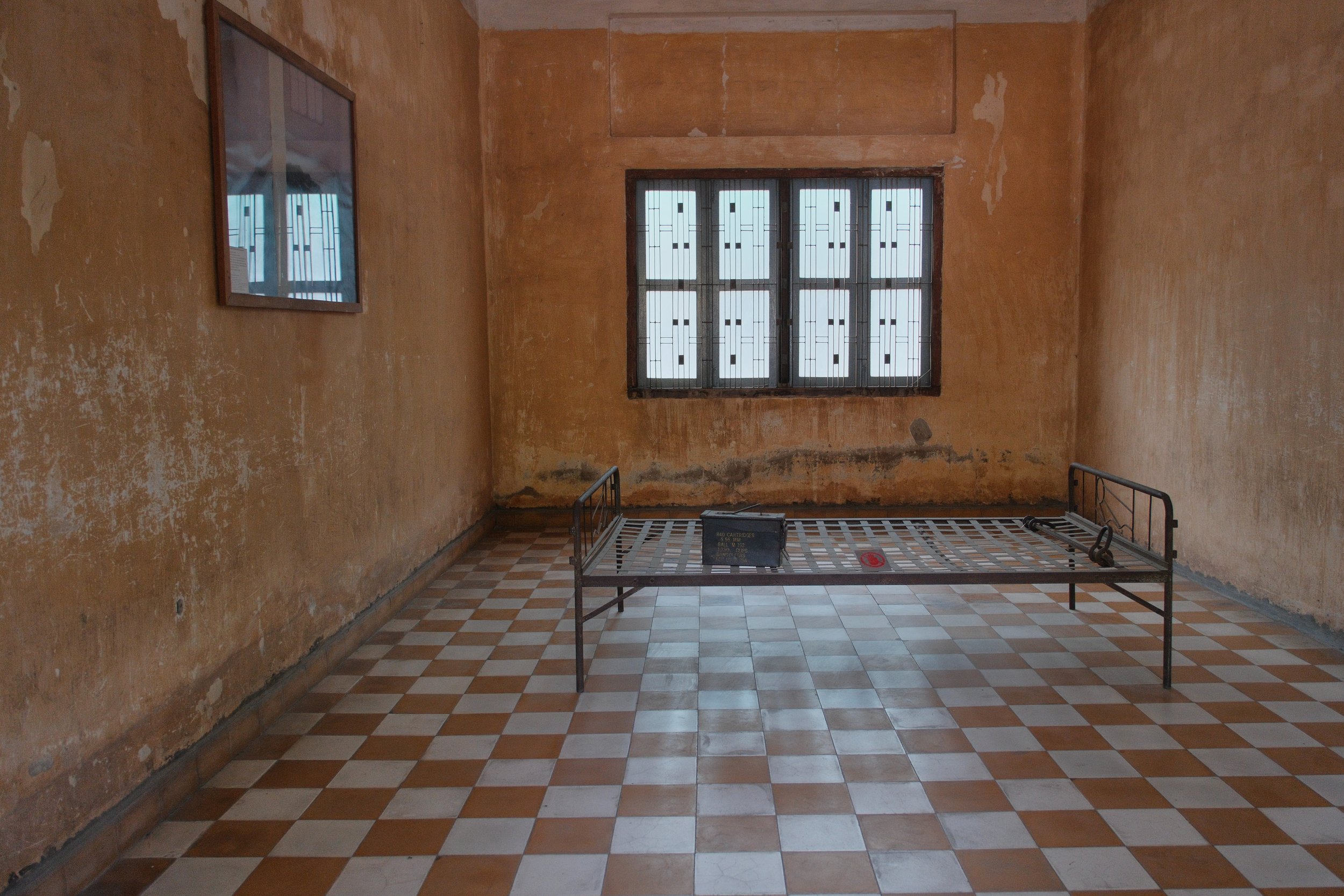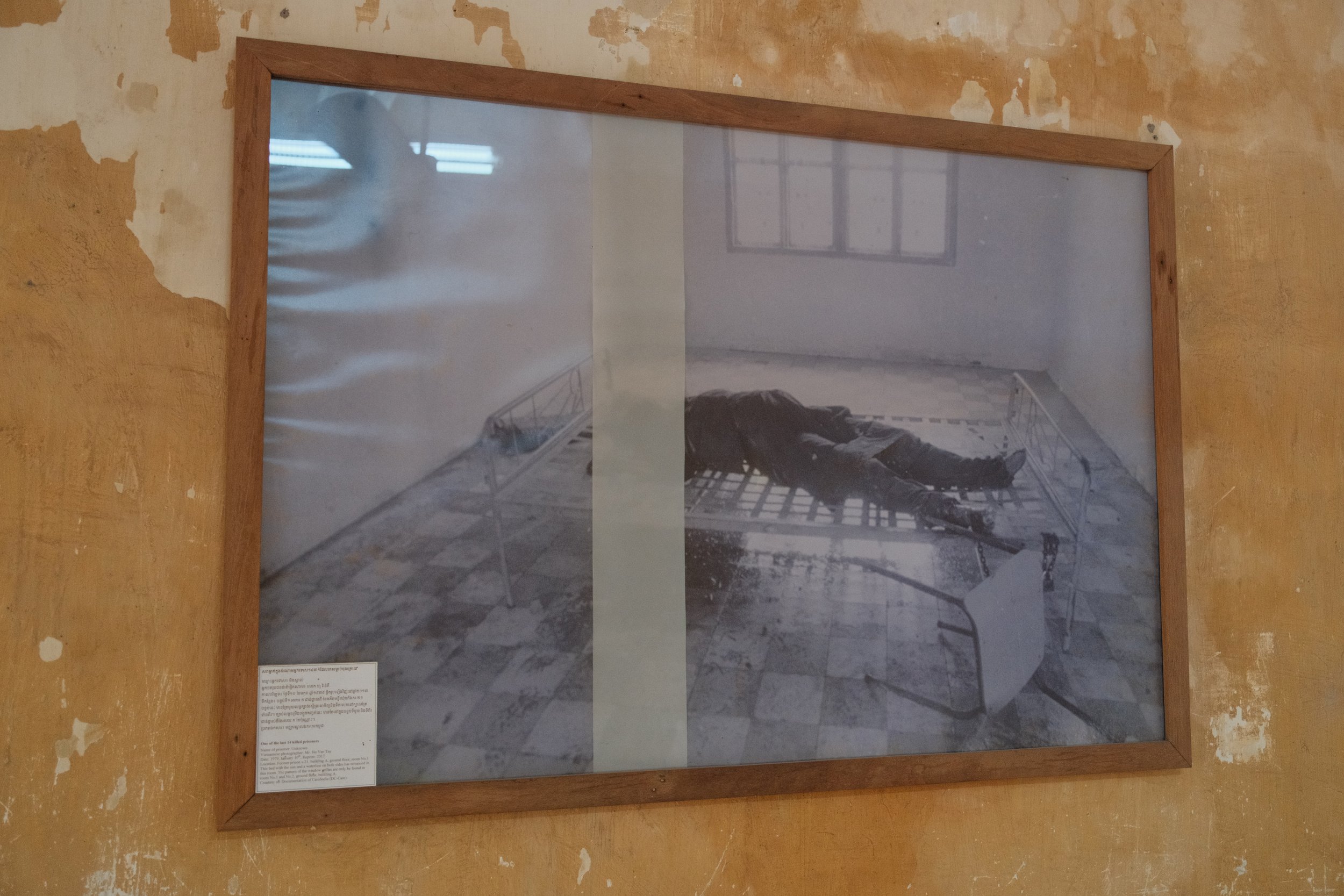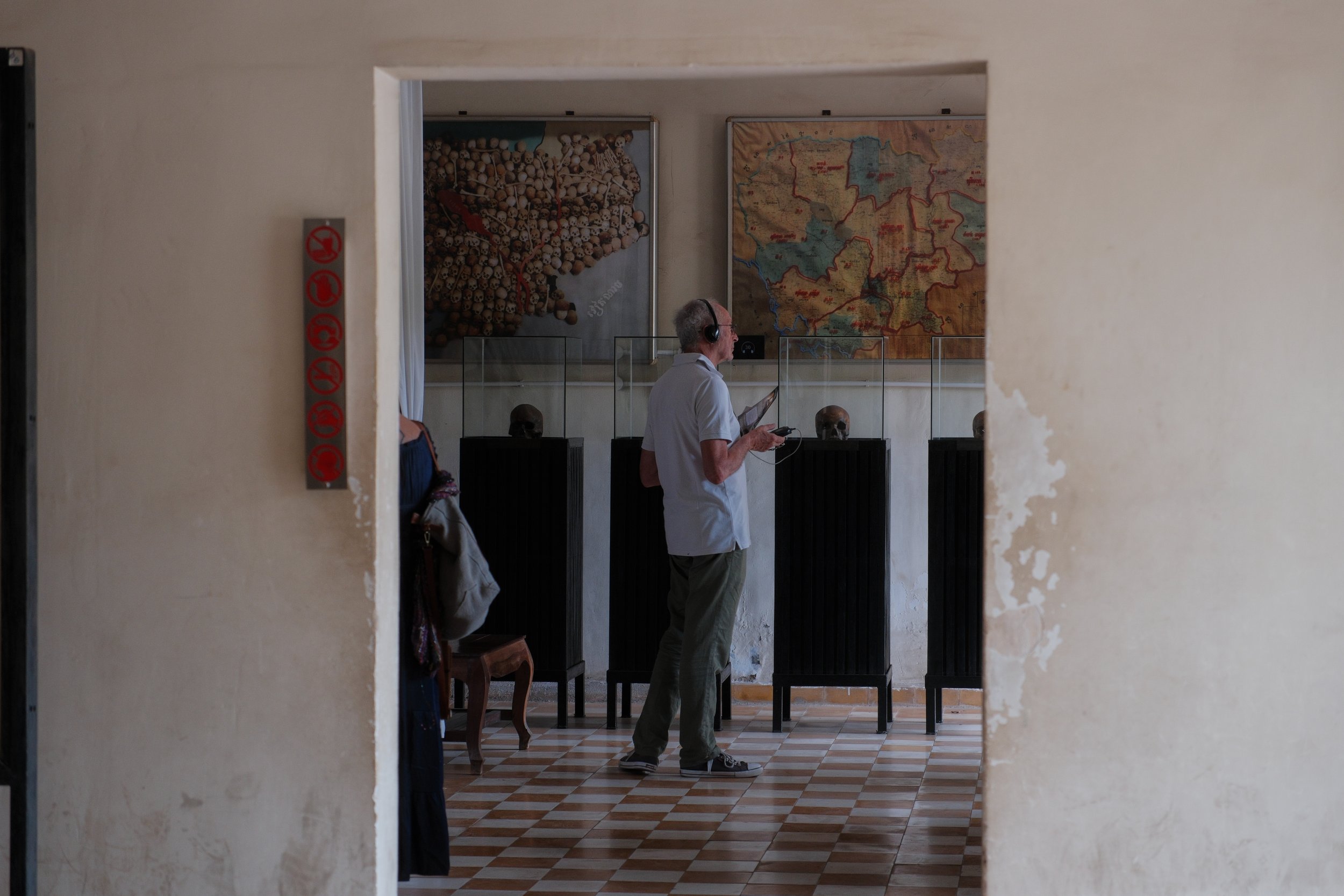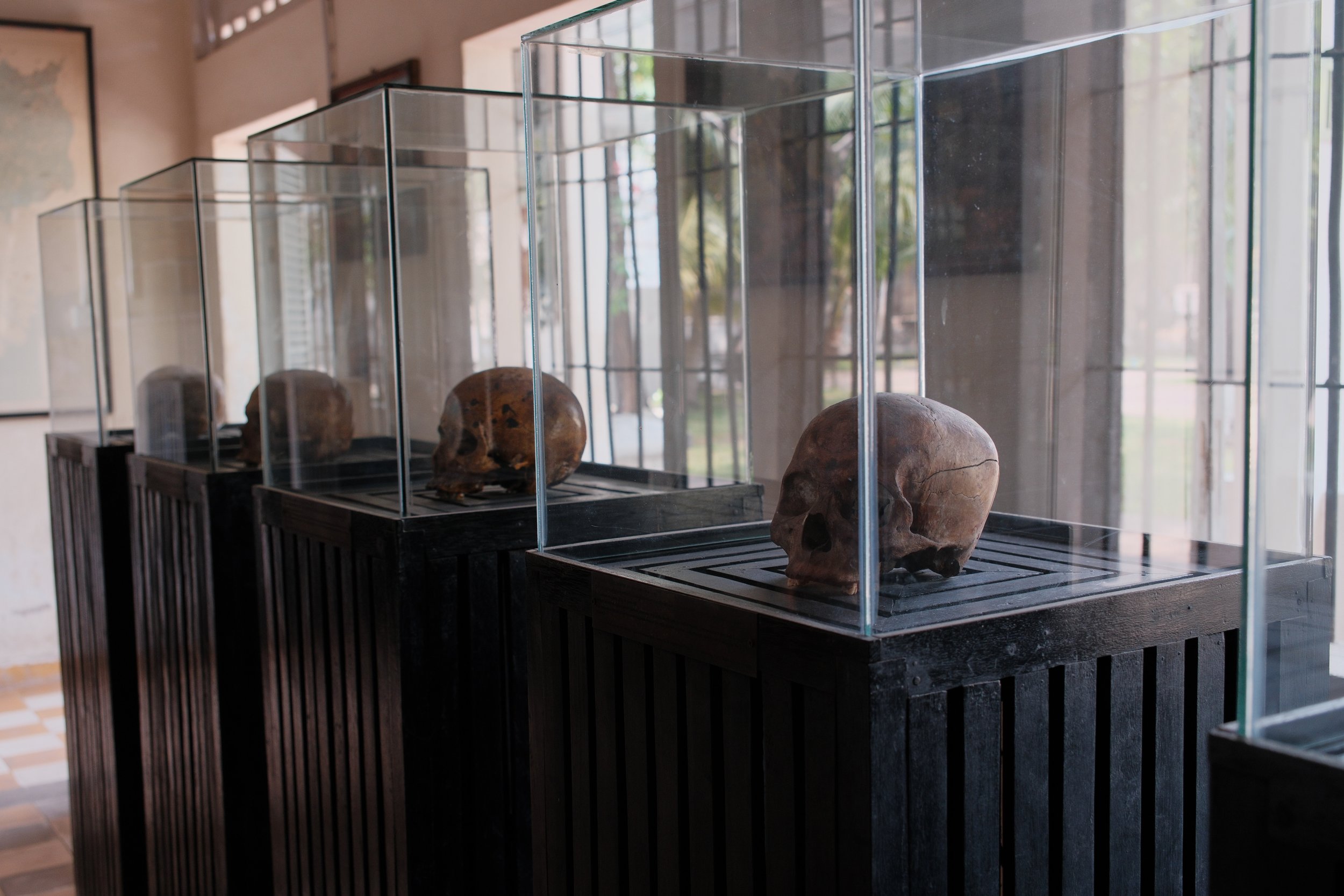Phnom Penh: On Carrying A Feeling Through Distance
by Marc Nair, 25 June 2023
The writer Ocean Vuong calls walking carrying a feeling through distance. And so I ask myself, what is the feeling of walking the streets of Phnom Penh, Cambodia?
Phnom Penh is a city of two selves, exemplified by the image below, moving between its less hurried past and a slicker future.
The country has been taking small steps to move away from the long shadow cast by the Khmer Rouge regime, which left the city, and the country, culturally beleaguered and economically lagging behind its Southeast Asian counterparts.
Everywhere now are signs of growth: silver skyscrapers sprout between temples and thoroughfares bisect the old neighbourhoods. And yet, old habits merely find new sidewalks to play on.
In its burgeoning energy it reminds me of an early prototype of Ho Chi Minh City, maybe five to seven years ago. That buzz and drive is present, but in smaller doses. There are cafes in Phnom Penh manned by young people, but big business has also come in, maybe too quickly. Foreign capital drives much of the city’s growth but local city dwellers also complain about how it has become too expensive to live in. So the locals are priced out of their own city and have to relocate to suburban areas. The residential areas that still remain in the city are more like Yangon in long, low-slung blocks and the very functionally named streets.
Walking these streets is an education in timing, contrast and the serendipity of street life, something that is completely missing from the manicured sidewalks of Singapore.
But it also feels impossible (wrong, almost) to visit Phnom Penh and not go on a tour of the Tuol Seng Genocide Museum and the Cheung Ek killing fields, an hour north of the city centre.
One of the things that I was most struck by at the museum was the presence of Chum Mey, one of the twelve surviving prisoners who were liberated when the Khmer Rouge abandoned the prison in 1979. He wrote a book about his experience and was there to lend credence and hopefully sell some copies.
Chum Mey, one of 12 survivors found alive in Tuol Sleng Prison




